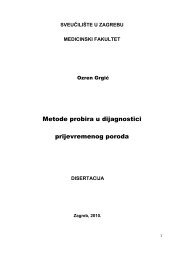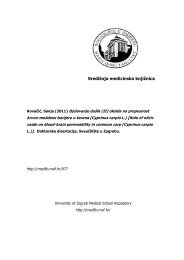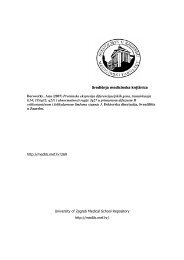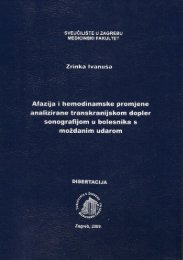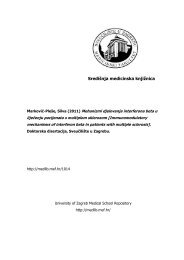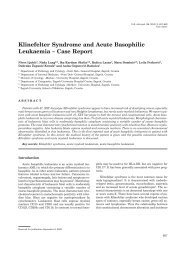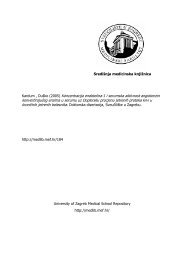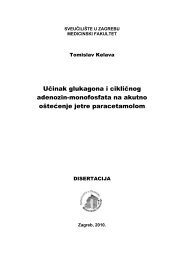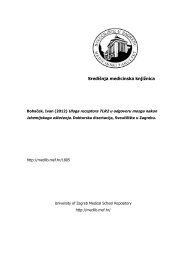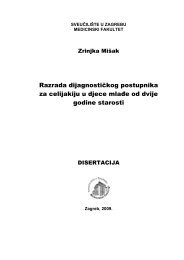Algorithm for classification and treatment of poststernotomy wound ...
Algorithm for classification and treatment of poststernotomy wound ...
Algorithm for classification and treatment of poststernotomy wound ...
You also want an ePaper? Increase the reach of your titles
YUMPU automatically turns print PDFs into web optimized ePapers that Google loves.
subjective chest wall pain, cosmesis, <strong>and</strong> shoulder or abdominal weakness, through the abilityto do daily activities (to st<strong>and</strong> from a sitting or supine position, to open a door, <strong>and</strong> to lift <strong>and</strong>carry a bag <strong>of</strong> groceries), <strong>and</strong> to grade overall satisfaction (Table III).From 1996 to 2004, we treated 31 patients with sternal <strong>wound</strong> infections by radicaldebridement <strong>and</strong> reconstruction with pedicled flaps. Most <strong>of</strong> our cases were type 2B (13/31)<strong>and</strong> 2C (10/31). There were also six <strong>of</strong> type 3, <strong>and</strong> two <strong>of</strong> type 4. Types 1 <strong>and</strong> 2A, wereusually successfully treated by the cardiac surgeons with open packing <strong>and</strong> secondary closureor rewiring. All our patients were seen when their <strong>wound</strong>s were in chronic phase according tothe <strong>classification</strong> <strong>of</strong> El Oakley <strong>and</strong> Wright [4], usually three or more weeks after open heartsurgery.Surgical <strong>treatment</strong>, under general anaesthesia, consisted <strong>of</strong> radical debridement <strong>of</strong> allnecrotic s<strong>of</strong>t tissue, bone, <strong>and</strong> costal cartilage with simultaneous reconstruction, except <strong>for</strong> thetype 4, which were treated by delayed closure after aggressive <strong>treatment</strong> with antibioticsgiven parenterally, <strong>and</strong> chosen according to the results <strong>of</strong> quantitative tissue culture. When theentire sternum was devascularised or necrotic, we did not hesitate to remove the sternum. Allflaps <strong>for</strong> reconstruction were pedicled. The reconstructive options <strong>for</strong> sternal osteitis withnon-viable bone may be divided depending on the site <strong>of</strong> the sternal dehiscence or instability(2B <strong>and</strong> 2C). Patients with upper <strong>and</strong> middle third defects were treated with bilateral orunilateral pectoralis major transposition flaps or turnover flaps. The patients with lower thirddefects were treated with VRAM (vertical rectus abdominis musculocutaneous) flaps, omentalflaps, bipedicled composite pectoralis major <strong>and</strong> rectus abdominis flaps <strong>and</strong> a latissimus dorsiflap was used in only one case. For type 3 <strong>and</strong> 4 we used omentum alone or omentum withVRAM or pectoralis major advancement musculocutaneous flaps <strong>for</strong> additional cover.However, we prefer to close the overlying skin <strong>and</strong> subcutaneous tissue directly afterundermining, if possible.




